Textures
An expanding catalogue of minerals with descriptions of properties that will help you identify them in thin section, along with links to typical examples in Virtual Microscope samples.
This catalogue was created by Stelios Karastergios, University of Milano-Bicocca, during an internship at the Open University, with additions by Huw Sheppard, University of Oxford, during an internship at the Open University.
TEXTURES
- GRANOBLASTIC
Granoblastic texture is a typical texture in rocks that have been metamorphosed in high conditions (increased pressure and temperature). This texture can be recognized in a rock when polygonal patterns are forming between the mineral grains. Schematically, the mineral grain boundaries tend to be straight, and the grains are gradually transforming into perfect pentagons or hexagons. Another sign of the granoblastic texture is the global (or local) increase of the grain size in a rock. The straight mineral grain boundaries in a granoblastic texture form angles of 120 degrees and are called triple junctions. The triple junctions testify that the partitioning minerals are in chemical and textural equilibrium (i.e., they are thermodynamically stable).
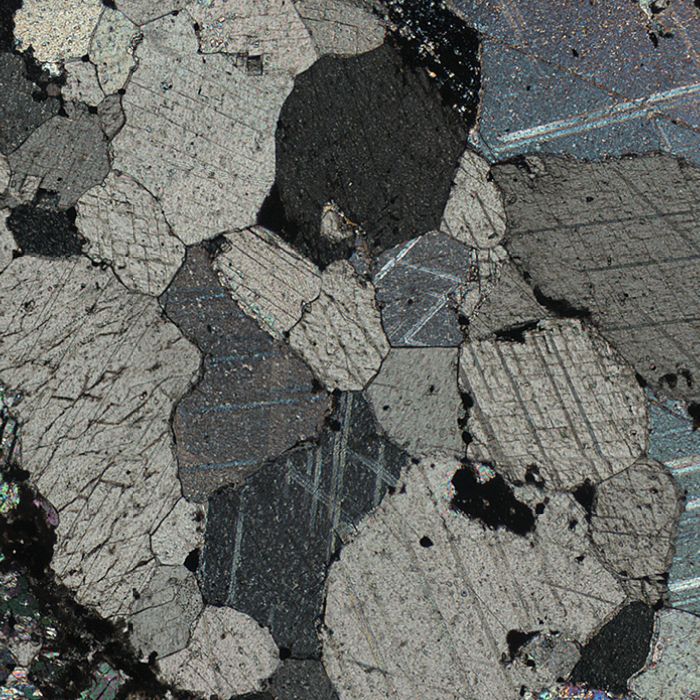
- PHENOCRYSTIC
Phenocrystic texture exists in igneous rocks, when certain crystals are conspicuously larger than the matrix of a thin section, or the rest of a rock. These larger crystals are called phenocrysts and form at the first stage during magma crystallization. Because they can find plenty of space, they tend to also develop euhedral shapes. This texture’s counterpart in metamorphic rocks is called porphyroblastic texture.
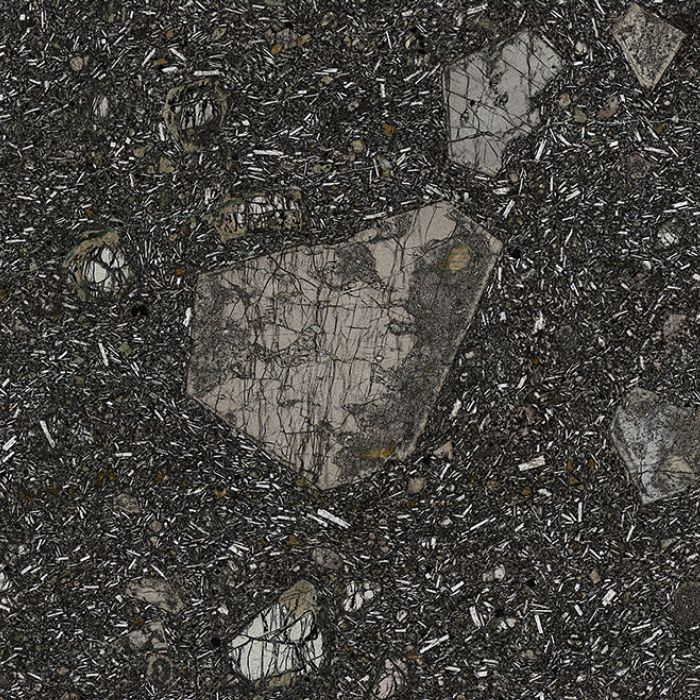
- PORPHYROBLASTIC
Porphyroblastic texture is a typical metamorphic texture where certain mineral species tend to overgrow and form very large crystals. These crystals are usually rounded or prismatic and can reach from several millimetres up to several centimetres in size. Typical metamorphic minerals that form porphyroblasts are garnet, staurolite, cordierite and chloritoid. During porphyroblast growth, mineral inclusions can be trapped inside them. These inclusions are very useful for certain metamorphic rock studies, because they can tell the story of either a specific mineral reaction that took place (minerals that were consumed or produced during the porphyroblast growth), or for a certain mineral phase which was stable during porphyroblast growth.
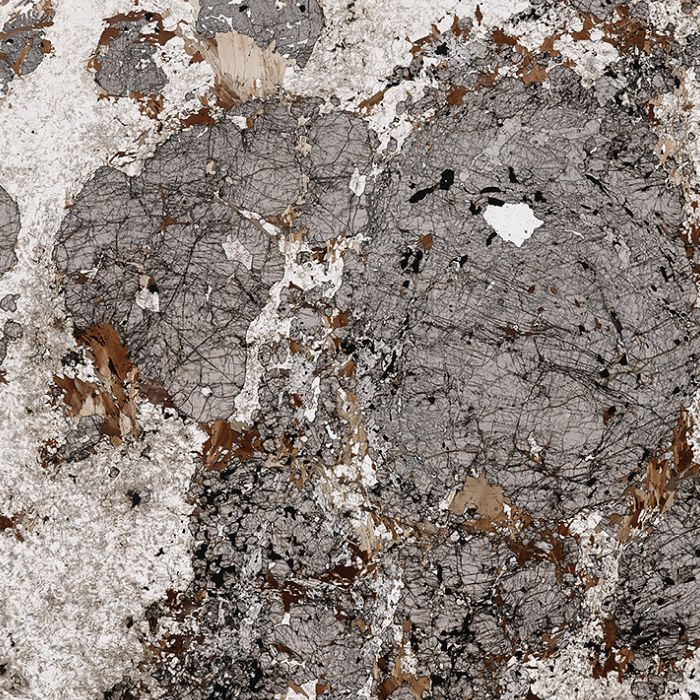
- POIKILOBLASTIC
Poikiloblastic texture is characteristic in metamorphic rocks and has got some same features with porphyroblastic texture. In the poikiloblastic texture, very large crystals (poikiloblasts) contain a plethora of mineral inclusions. In fact, this is the striking difference between the two metamorphic textures. Typical metamorphic minerals that form poikiloblasts are staurolite, garnet and cordierite. The respective texture in igneous rocks is called poikilitic texture.
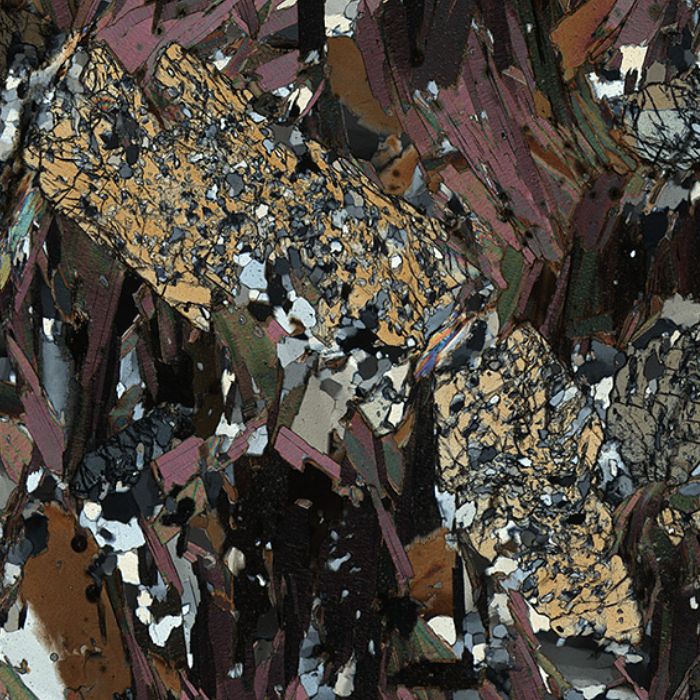
- LEPIDOBLASTIC
Lepidoblastic texture occurs in metamorphic rocks when phyllosilicate minerals (biotite or muscovite mica) form assemblages with coarse-grained prismatic crystals compared to their surroundings. In this texture the micas tend to be also foliated (i.e., oriented towards a certain direction) and their shape represent sword or blade shapes. Hence, comes the name of this texture from the Greek “lepida" i.e., a sharp blade. Often these micas are folded, but this is a feature in low-grade metamorphic rocks such as phyllites and chlorite schists.
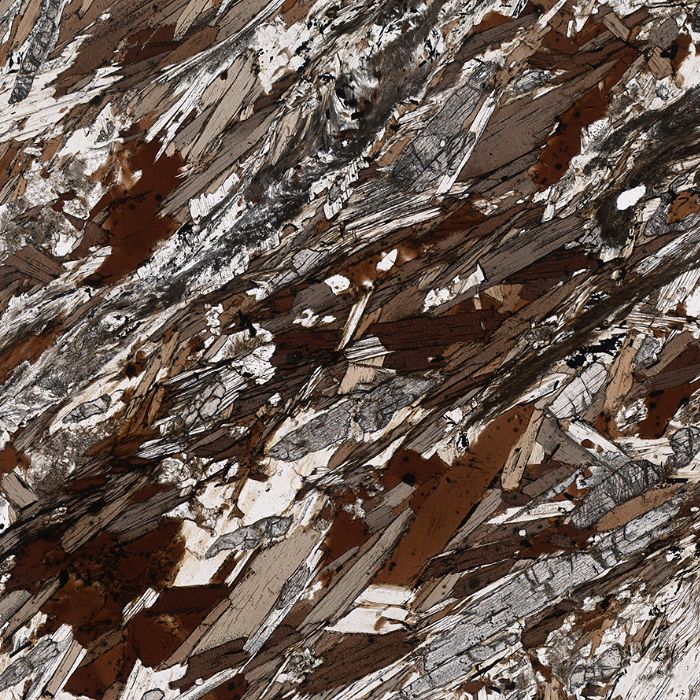
- INOBLASTIC
Inoblastic texture is a metamorphic microstructure where a plethora of amphibole crystals (or rarely, pyroxenes) form elongated assemblages of prismatic grains. This texture is common in metamorphic rocks (greenschists, blueschists, foliated amphibolites and foliated gneisses) whose foliation is defined by amphibole-rich layers. Under the microscope the amphibole crystals give a sort of fibrous appearance with narrow, but elongated crystals.
- OPHITIC
Ophitic texture is a subcategory of poikilitic texture in igneous rocks, where euhedral plagioclase laths are enclosed by pyroxene. This texture is characteristic in igneous rocks such as dolerite, gabbro, and basalt, rocks that generally are rich in pyroxene and plagioclase.
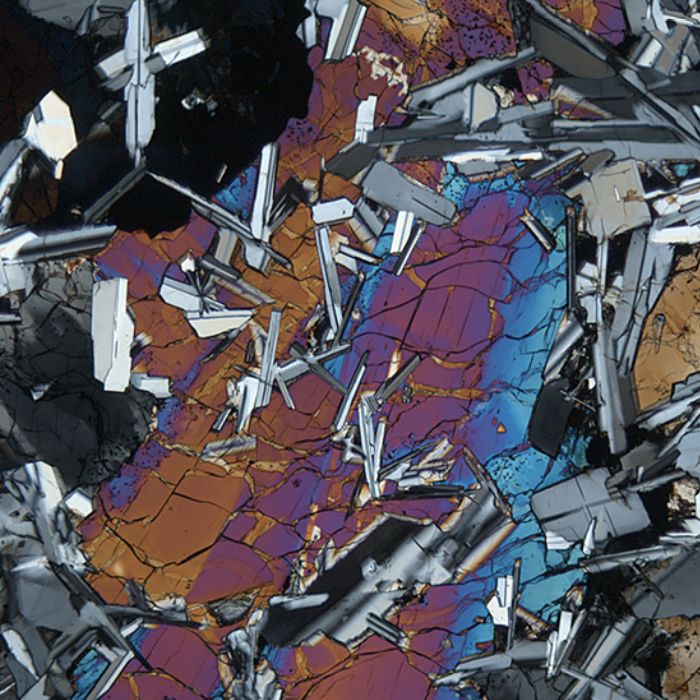
- FOLIATION
Geologists call foliation any linear pattern defined by elongated minerals in a rock. Naturally, minerals that tend to form prismatic (pyroxene, amphibole) or needle-shaped crystals (muscovite and biotite mica), are the perfect mineral candidates that show that a rock is foliated. Therefore, foliation patterns are easier to be distinguished in rocks such as schists, amphibolites and in some gneisses, but in massive rocks such as granulites, detailed microscopical analysis is required to record which mineral define the foliation. The foliation can be a result of both compressional and extensional tectonic forces. During compression the minerals are foliated but restricted in crenulated folded bands and during extension, the minerals are stretched and form straight planes. In some rare occasions, foliation can be formed by a percolating fluid phase through a rock (H2O, CO2, NaCl aquatic brines, etc), as the result of a mineral (chemical) reaction.
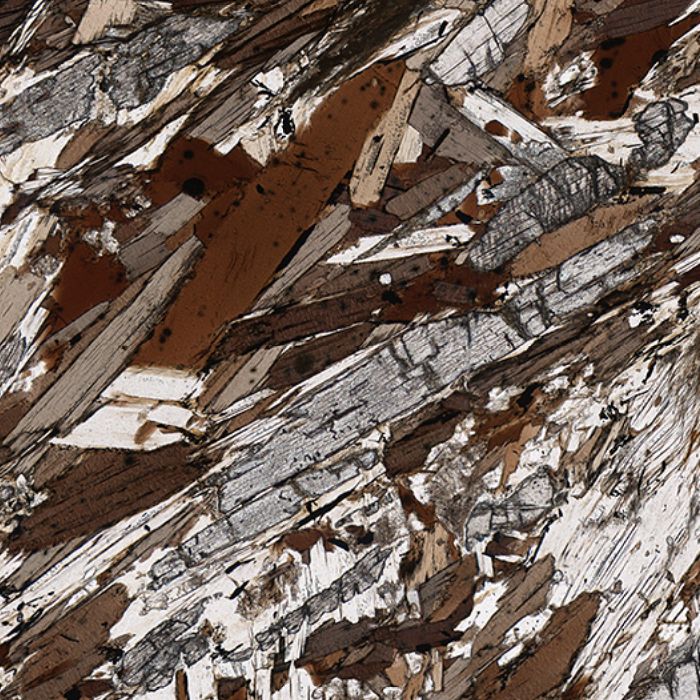
- CRENULATION
Crenulation texture is a typical feature of low-grade metamorphic rocks that have experienced intense compression which in the end resulted in strong folding. Crenulation bands are typically visible when the host rock is inhomogeneous, containing bands of different mineral composition. For instance, in phyllites and low-grade schists, quartz bands are usually in alteration with softer bands, containing predominantly micas (muscovite, chlorite, biotite, etc). The crenulation texture is a powerful indicator for structural geologists who study mountain belt formation and need indexes that show the direction of the compression, and hence, the continental movements.
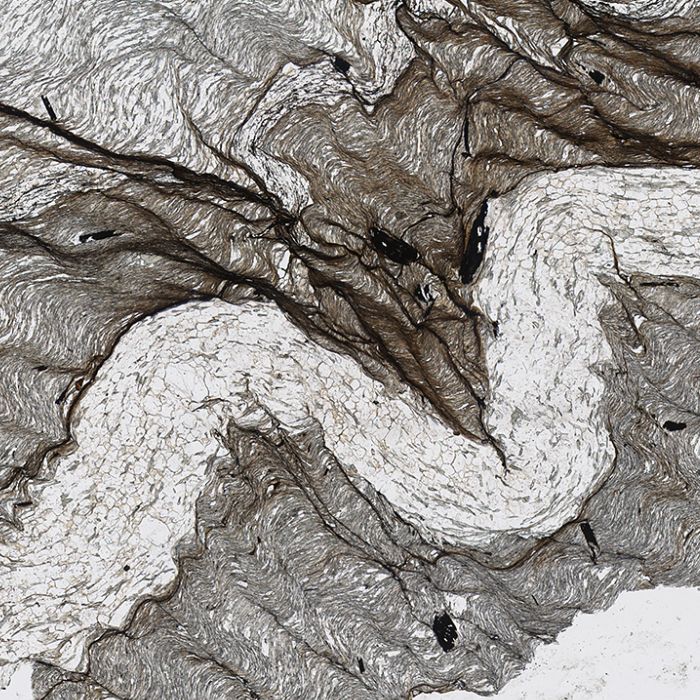
- REACTION TEXTURES
View example in VM (Symplectites)
View example in VM (Corona)When rocks are in chemical disequilibrium, they tend to change two of their internal parameters, in order to become stable to the new reigning pressure and temperature conditions (P–T conditions). Therefore, rocks, as a complex chemical system with many ingredients (element oxides) either they form new minerals whose chemical structure (formula) is thermodynamically stable in the new P–T conditions, or they change their texture (arrangement of the mineral phases in the three dimensions), or they do both modifications. The last sentence in fact, defines the term of metamorphism in geology textbooks. Two characteristic textures which involve both new mineral formation and change of the (micro)structure in a rock are the symplectites and the coronas. The symplectites are local mineral assemblages that form around a reacting mineral, specifically when a metamorphic rock is being exhumed in a relatively fast tempo. The rapid decompression (quick pressure decrease), initiates chemical, replacement reactions of the minerals that they are not stable anymore. A typical metamorphic symplectite-formation reaction is the breakdown of garnet into pyroxenes (clino- or ortho-) and plagioclase. The newly formed minerals are tangled all together around the mineral that is breaking down. The name of this texture come from the Greek verb “sympleco", i.e., meaning making something tangled.
On the other hand, corona texture is often found in both igneous and metamorphic rocks. Similar to the symplectites, there is a mineral that breaks down due to chemical disequilibrium or thermodynamic instability. The striking difference between the two textures is that in the corona, the newly formed minerals are well-distributed around the reacting mineral, completely and conspicuously surrounding it. Corona took its name from the word crown; if you imagine that the reacting mineral is the head of a person, then you see that the coronitic minerals are developing perfectly around it.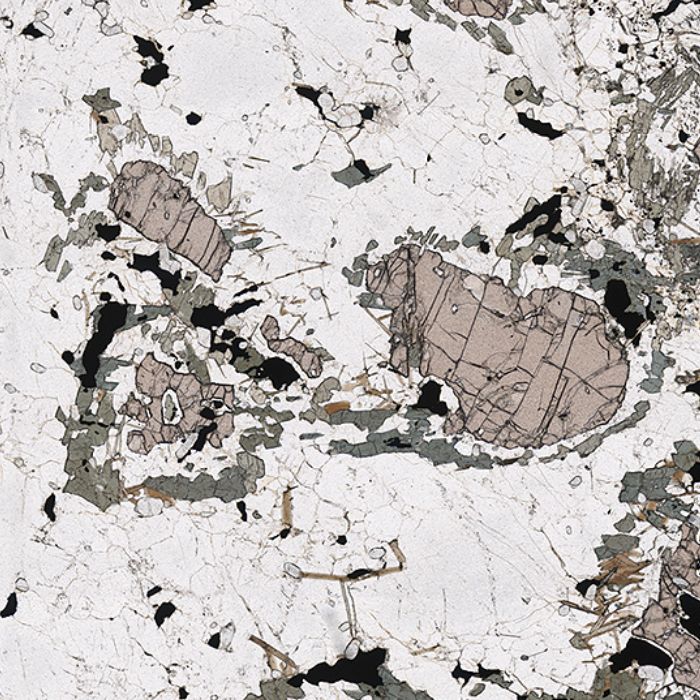
- FLOW-BANDING
Flow-banded texture is characteristic in volcanic rocks. Volcanic rocks are formed from the solidification of lava during its ejection from an active volcano. Based on their composition, lavas have various viscosities, but the general rule defines that silicon-poor lavas (e.g., basalts) have low viscosity (i.e., they are runnier) compared to silicon-rich ones (e.g., rhyolites, dacites) that have high viscosity (i.e., they are stickier). In rhyolites due to high viscosity, there is relatively more time for minerals to crystallize. However, lava can still flow slowly around the forming phenocrysts. This slow lava flow sometimes is reflected in specific patterns that form around the phenocrysts. You can see and imagine, how lava was flowing during contemporaneous crystallization!
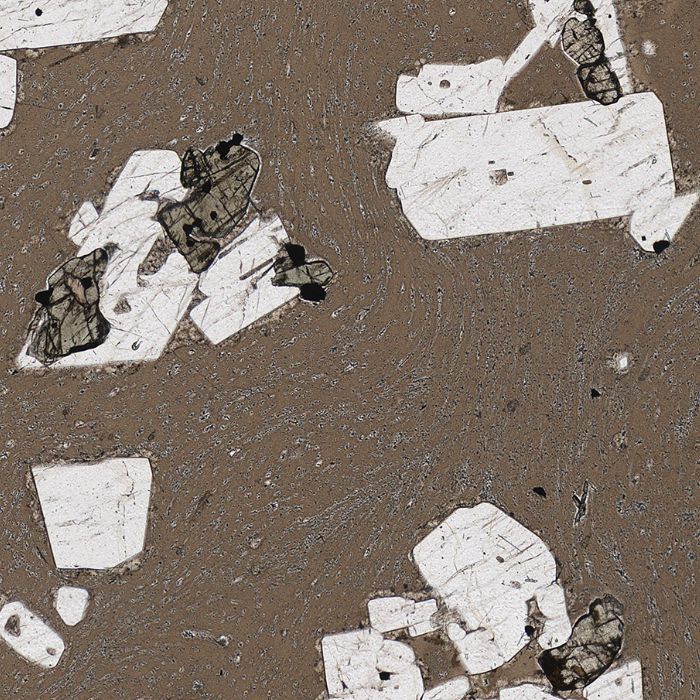
- VESICULAR (AMYGDALOIDAL)
Vesicular texture is typical in volcanic rocks such as basalts and andesites. During eruption and deposition of these rocks, volatile compounds (e.g., volcanic gases) escape from the basalt and leave behind vacant spaces. Because these rocks form at the surface of the Earth and not too deep, the overlying pressure is (almost) absent. Therefore, these cavities do not collapse and are preserved. However, there is a possibility that they will start to fill with minerals by the action of (hydrothermal) fluids. Since there is an ample space in these cavities, the crystals form euhedral and prismatic shapes like in geodes.
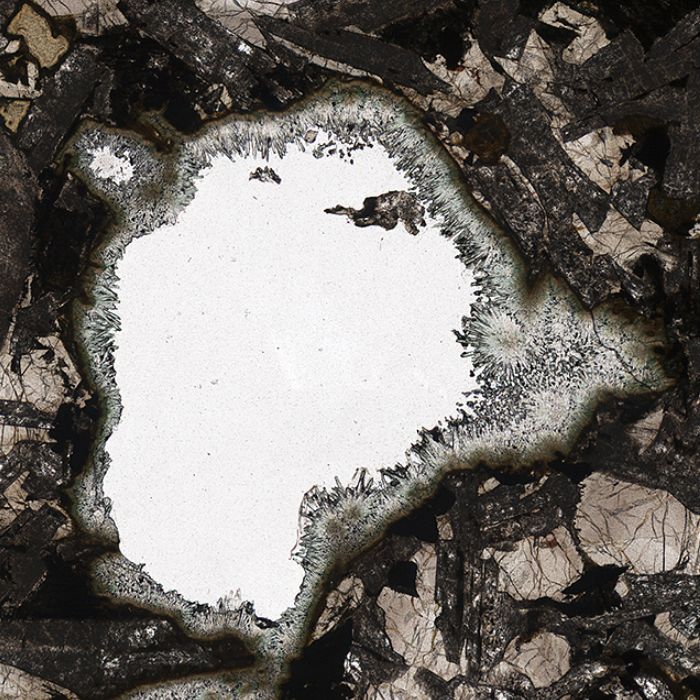
- HORNFELS
Hornfels texture is created due to thermal (contact) metamorphism of shallow rocks, when they come to contact with a hot, intruding magma. In shallow conditions deformation is usually absent, and the affecting rocks simply recrystallize under solid conditions (i.e., they do not melt from the heat). Consequently, the recrystallized minerals tend to form an interlocking mosaic of randomly oriented grains in the hornfels rock.
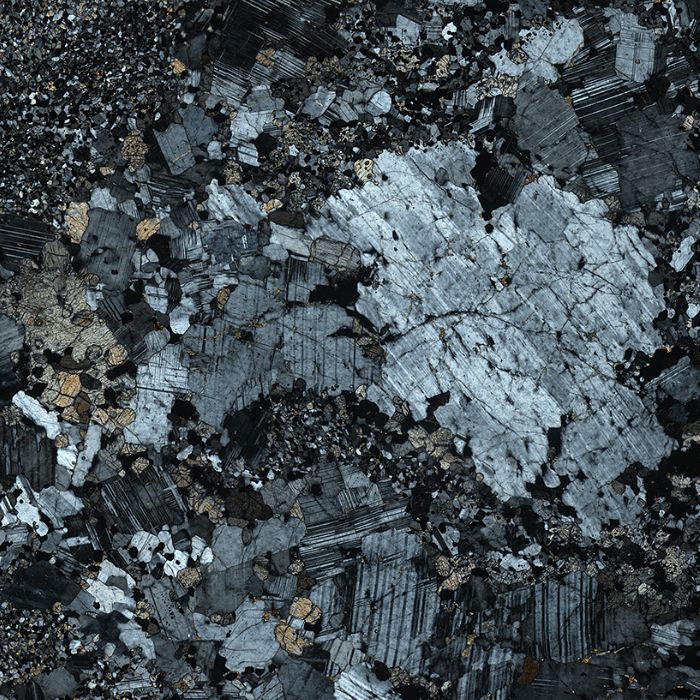
- POST-KINEMATIC METAMORPHISM
The image below shows a post-kinematic texture, which demonstrates the history of the unit that the sample comes from. There is a clear schistosity defined by the white micas (most likely muscovite) and chlorite, developed during a kinematic event. Schistosity is where platy minerals (nearly always phyllosilicates like micas) align to give a rock an overall foliation (typically showing some minor local variations and unevenness). A kinematic event is one where a movement exerts a force on a rock. This is typically an orogeny. The movement exerts a pressure on the rock which causes features like schistosity to form. In this sample, later metamorphic processes caused the growth of a garnet porphyroblast after a kinematic event created the initial schistosity. We can tell that this event is post-kinematic because the garnet contains inclusions of the original micas which are still aligned with the main schistosity. This indicates that the garnet must have developed after the schistosity. Otherwise, the micas in the garnet would either be unaligned, because the garnet grew before schistosity developed, or misaligned with the main schistosity, indicating at least two kinematic events, one which formed the first schistosity and another which altered the schisosity so that it ceased to in alignment with that contained in the porphyroblasts.
- PSEUDOMORPHISM
Pseudomorphism is where one mineral crystal replaces another. This typically occurs when two minerals have the same chemistry but form under different pressure and temperature conditions. One mineral will form under one set of conditions, but when the conditions change, a second mineral will become stable and the first will become unstable. The mineral will then slowly undergo lattice changes, changing the optical properties of the crystal. However, the change is entirely internal: the habits of the original mineral, which define the overall crystal shape, is unchanged by the internal lattice structure. This produces a crystal which shows one mineral's optical properties with another mineral's habit. The most common situation in which to find pseudomorphs is in metamorphic rocks, which travel through many different areas of pressure-temperature space.
One of the best examples of this is the Al2SiO5 system: sillimanite, kyanite and andalusite. The image below shows elongate crystals indicative of sillimanite, containing patches of high birefringence typical of sillimanite. However, most of the crystals show a low degree of birefringence, much lower than would be expected in sillimanite crystals of these sizes. The low birefringence instead fits kyanite. This therefore shows a rock where sillimanite has formed at high temperatures and pressures which has regressed to the point that kyanite became stable instead of sillimanite, causing replacement of the sillimanite